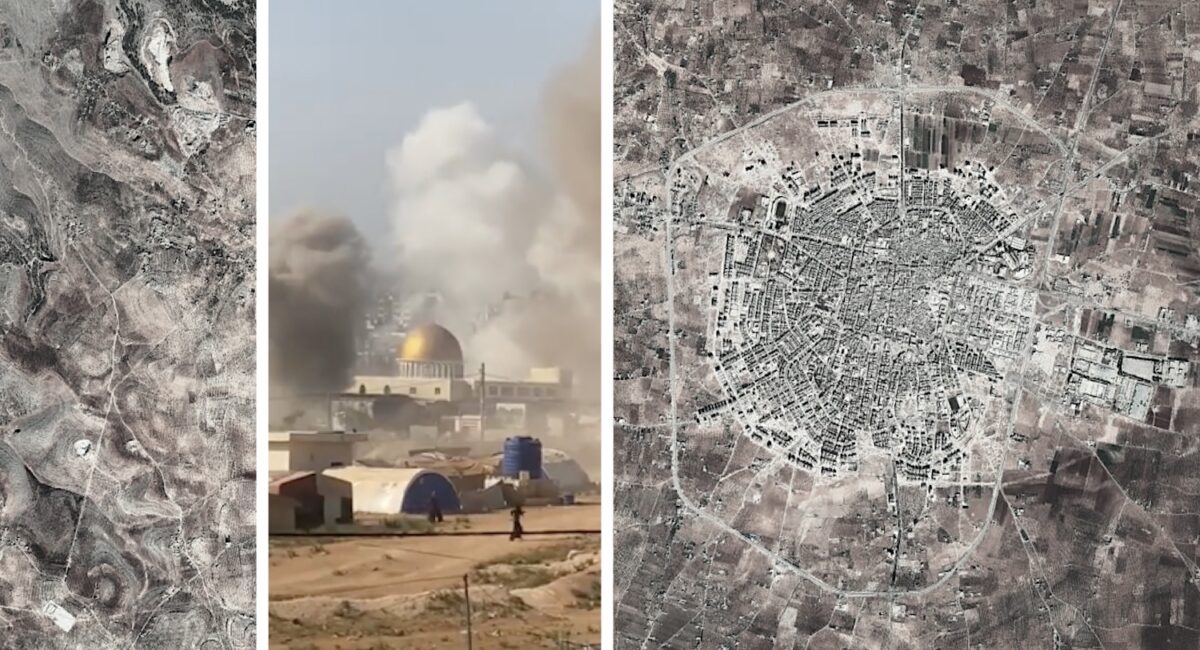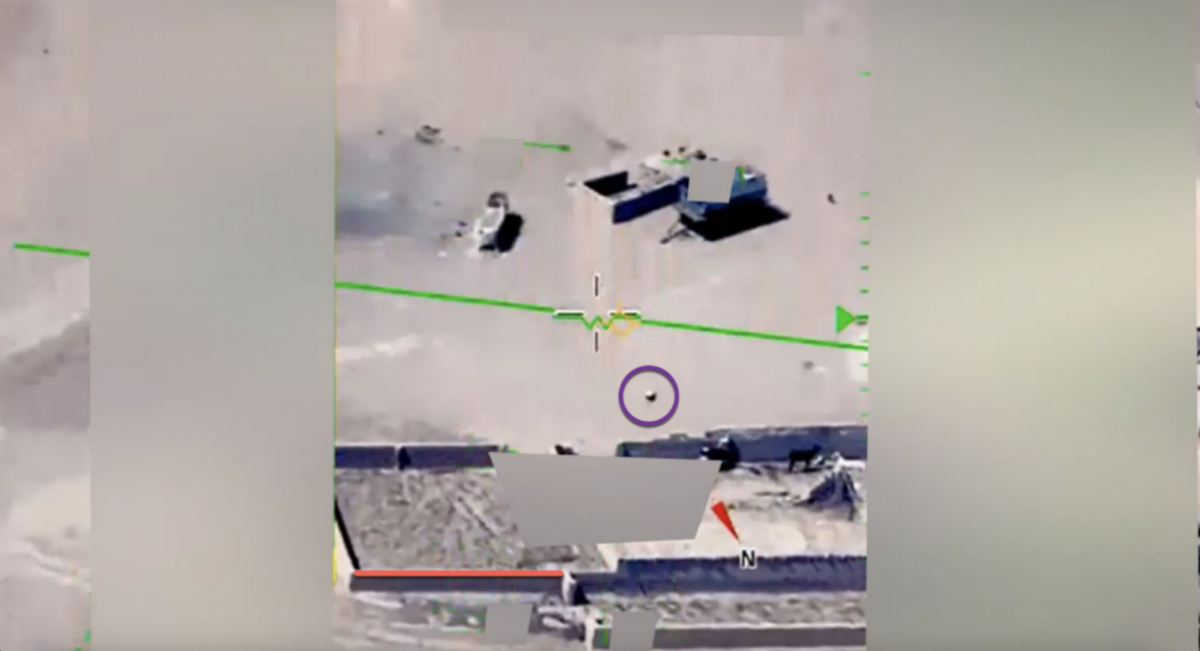How Relevant to Syria is Syria’s Regime?
On October 31, 2016, the Turkish daily newspaper Yeni Şafak reported that Turkey and Russia signed a “landmark agreement” in northern Syria, ostensibly partitioning portions of the provinces of Aleppo, Idlib, Latakia, Raqqa, Al-Hasakah and Deir ez-Zor to a Turkish-backed assembly of “local elements” and FSA-aligned brigades.
This report is unconfirmed by independent sources – Yeni Şafak operates with a hardline pro-Erdoğan editorial stance, and the paper has been known for inventing stories in the past – but it reveals the new status quo which has conformed to the on-the-ground reality of conflict in Syria: the Assad regime is simply no longer central to the discussion.
This new reality may be difficult to parse for those who have identified the conflict as a simplistic portrayal of the Assad regime fighting against an opposition composed almost entirely of ISIS and Al-Qaeda militants. But that storyline, albeit pushed conveniently by state-run media outlets owned by Syria’s foreign backers, is almost entirely false.
On the side of the regime, most offensives are headed by a collection of loyalist militias and foreign, Iran-funded proxies. Hezbollah, which recently released a set of propaganda photos showing a parade of its American-made Armored Personnel Carriers (APCs) in Syria, has lost more fighters to date in the Syrian war than it has in the entirety of its three-decade-long war with Israel. And as Rao Komar wrote for NOW Lebanon in November, pro-Assad proxy militias are becoming increasingly comprised of Pakistani and Afghan Shiite fighters from the furthest expanses of Iran’s influence.
This reality in which the regime wields little influence over its territory is reflected practically in policy discussions between change-makers on the ground in Syria. On November 7, 2016, the Chairman of the US Joint Chiefs Staff Gen. Joseph Dunford reported that the United States had met with its Turkish counterparts in Syria, and agreed to develop a plan for “seizing, holding, and governing Raqqa” after Islamic State fighters are driven from the territory.
Turkey has recently backed FSA brigades and local militias in the fight, dubbed “Operation Euphrates Shield”, to drive ISIS from northern Syria, while the United States has relied heavily on the use of Kurdish YPG brigades integrated into the coalition-backed Syrian Democratic Forces. Along these lines, most territory liberated by Turkey – particularly towns on the west bank of the Euphrates River, such as Qabbasin and Tel Rifat – has been handed over for governance to FSA forces, while much territory liberated by the SDF – such as the city of Manbij – has been ceded to YPG governance.
It’s likely that such a plan between Turkey and the United States would reflect a compromise between the two powers’ preferences for governance, a de facto partition of Syrian territory which will see the Syrian state’s grasp over its land and economy decline even further. When Turkey isn’t ceding territory to FSA militias, it is threatening the use of military force – in Al Bab, Afrin, Tel Abyad, Sinjar, and Tel Afar – a posturing which has rarely been met with any sort of response by the Assad regime.
None of the land captured by foreign-backed forces in northern Syria has been ceded to the Assad regime, nor does the regime have a practical capability to assert its desire to control this territory. As it stands, the Syrian Arab Army and its collection of fledgling loyalist and foreign militias barely has the capacity to govern its own territory – and though the most recent regime coalition offensive on the eastern portion of Aleppo city has been successful in seizing nearly the entirety of Aleppo from opposition forces, it has been bolstered by an intensive bombing campaign from Syria’s superpower patron state, the Russian Federation, as well as the IRGC’s wide-ranging network of proxy groups.
The proxy war for Syria

A rescue worker stands amid rows of dead bodies which had suffered Sarin exposure. Ghouta, Damascus, August 21, 2013
In the hours following the horrific Ghouta chemical attacks on August 21st, 2013, a German naval intelligence craft intercepted a communication between a high-ranking Hezbollah operative in Syria and an official at an unnamed Iranian embassy.
In the intercepted communication, the Hezbollah operative bemoaned Assad’s order to use sarin gas on a residential suburb of Syria’s capital city. “Assad had lost his temper and committed a huge mistake by giving the order for the poison gas use,” the Hezbollah operative was reported to have said.
In the recent Aleppo offensive in February of 2016, in which opposition forces headed largely by Jabhat Fatah al-Sham captured numerous strategic points involved in breaking the siege of eastern Aleppo city, alleged Hezbollah fighters were captured on video mocking the Syrian Arab Army for being effectively nonexistent. “We can’t find them anywhere,” one Hezbollah fighter says, perhaps referencing reported cases of SAA fighters fleeing from their positions – like in the heavily fortified military academy complex – in response to successful advances by opposition fighters.
These two instances are simply a slice of all the unheard chatter shared between fighters across the battlefield in Syria, but they capture the current state of Assad’s armed forces better than most: both involve foreign agents – fighting on behalf of Assad – speaking contemptuously of the regime they’re fighting for.
This deep sense of contempt held by regime coalition forces is also reflective of the group composition of these foreign, largely Iranian-backed militias.
In Iraq, Shiite militia fighters are being ferried to Syria by Iran, where their salaries are paid by the IRGC to fight on behalf of the Assad regime. In August of 2016, senior US military officials reported that Iran was paying the salaries of nearly 100,000 Shiite militia fighters – largely bannered under Hezbollah, or the Popular Mobilization Forces (PMF) – fighting in Iraq.
In 2013, Al-Monitor reported that 14 Iranian-backed Shiite brigades were operating in Syria, with many comprised of foreign fighters from Iraq and (increasingly) Afghanistan. In January of 2016, the spokesman for the Iranian-established paramilitary Badr Brigades said that “[Iraqi] fighters, along with the Lebanese Hezbollah militants, have a great positive impact on the course of the war against IS in Syria.”
Harakat Hezbollah al-Nujaba is another prominent force directing regime offensives, primarily in Aleppo. The group publishes frequent reports on its offensives in Syria, operates at least 3,000 fighters in Aleppo, and is a direct descendant of the similarly Iranian-backed Asaib Ahl al-Haq. Despite both groups’ propagation of jihadist ideology, Harakat Hezbollah al-Nujaba has frequently clashed with Jabhat Fatah al-Sham in Syria; Iranian state media released footage in May of Hezbollah al-Nujaba fighters killing 23 JFS fighters (then known as Jabhat al-Nusra) in Khan Touman, Aleppo.
In fronts throughout the country, regime offensives are being led by loyalist militias. These militias often have little institutional connection to the Syrian Army beyond making use of its logistics framework, but are frequently led by pre-war shabiha with business and family connections to the Assad regime. Fighters for these groups are largely motivated by either pro-Assad and pro-Ba’athist ideology, or more often, by personal profit.
Despite this, pro-government militias have been hit with attrition on a similar – if smaller – scale to that of the Syrian Arab Army. An Ahrar al-Sham fighter from Latakia, who requested to remain anonymous, tells me he has witnessed numerous defections from the pro-regime National Defence Forces (NDF) to Ahrar al-Sham, one of the hegemons of the Syrian opposition.
He described a rendezvous between Ahrar al-Sham commanders and several fighters from the NDF who had attempted to defect. “Many of these men simply don’t want to fight, let alone fight revolutionaries,” he told me.
“Forced conscripts especially would often defect,” he said. “Men taken off the streets, hiding in homes along the coast and in Damascus… “
Assad or We Burn the Country

“Assad or we burn the country” graffiti spraypainted by regime loyalist forces in Homs, roughly 2013
And yet despite this reality of an increasingly fledgling regime presence in Syria, high-level diplomatic discussions have focused almost exclusively on one subject: the issue of what to do with Assad.
This is a strategy of diplomacy inherently doomed to fail, as localized regime loyalists have consistently proven that “Assad or we burn the country” is a slogan truly reflective of the regime’s core – those deeply committed to the Assads’ cult of personality will never accept a Syrian destiny controlled by anyone other than Assad.
And it is also a strategy of diplomacy inherently misdirected; despite the regime’s fierce, bloodthirsty defense of its “sovereign right” to rule Syria indefinitely, it possesses nowhere near the capacity to actually hold this stance. The Syrian Arab Army, once numbering in at nearly 625,000 active duty and reservist fighters, has been crippled by attrition, defections, and a constant siphon of knowledge and expertise. As defense policy analyst Tobias Schneider wrote in August for War on the Rocks:
“Following the swift collapse of its forces in the Battle for Idlib last year, President Bashar al-Assad had given a much publicized speech admitting the regime’s armed forces were suffering tremendous manpower shortages and would have to withdraw from certain fronts. Newspapers had been reporting for many months before of desperate conscription and recruitment efforts around the country. By late July, Assad appeared to crumble under the cumulative weight of years of slow attrition and defection, triggering a combined Russian and Iranian intervention seeking to reverse the regime’s fortunes.”
Schneider agrees with the common assessment that the Russian and Iranian intervention has provided a precipice for the regime to desperately maintain its slipping grip over Syria, but he also addresses the warlord-based economy which has emerged as a direct result of severe regime attrition:
“While much better supplied by the Syrian Arab Army’s still-standing logistics skeleton, the government’s fighting force today consists of a dizzying array of hyper-local militias aligned with various factions, domestic and foreign sponsors, and local warlords. […] Today, where briefing maps now show solid red across Syria’s western governorates, they ought to distinguish dozens and perhaps even hundreds of small fiefdoms only nominally loyal to Assad. Indeed, in much of the country, loyalist security forces function like a grand racketeering scheme: simultaneously a cause and consequence of state collapse at the local level.”
How did Syria reach the point of “hundreds of small fiefdoms” united, however loosely, under a delicately hung portrait of Bashar al-Assad? Despite repeated assurances by Assad that he will remain in power indefinitely, and a steady stream of Orwellian, “we’ve always been at war with Eastasia”-esque claims that Syria is in fact better off now than it was five years ago, it has become increasingly apparent to the outside observer that the Syrian state has degraded into a series of localized fiefdoms run as mini-mafia states.
But this system isn’t spontaneous; it didn’t manifest simply overnight amid an attrition of centralized state structures. The foundation for devolution into the sort of state which would make a Somali warlord blush has been laid since the earliest days of the Syrian Ba’ath Party, making Syria’s contemporary series of fiefdoms a simple reflection of the country’s pre-war socioeconomic system – a cronyist, corporatist, oligarchic system which has been shown to be heavily reliant on patronage, and only sustainable in the short term.
The Thugocracy

A Hafez al-Assad family portrait showcases his sons and daughter along with his wife, Aniseh Makhlouf
Syria’s delicate pre-war sociopolitical status has led, perhaps more than any other factor, to the current state of Syrian society. As Hafez al-Assad seized power in an intra-party coup dubbed the Corrective Movement, he imposed a system of economic fiefdom and patronage described by Robin Yassin-Kassab and Leila al-Shami as having a heavy mix of proto-fascist and corporatist tendencies.
Pre-war businessmen and those crime lords sanctioned by Hafez himself – the shabiha – comprised a major portion of the tiny sphere of influence which controlled every aspect of Syrian society. Prominent families tied to the Assads by marriage, such as the Makhloufs and the Shalish family, were afforded contracts and business deals which allowed them to establish total dominance over Syria’s economy. As Bashar al-Assad engaged in a period of neoliberal reform after his father’s death, cronyists like Rami Makhlouf were afforded the ability to turn their grip over the Syrian economy into a stranglehold, consolidating entire economic sectors and state industries into family-owned-and-operated conglomerates like SyriaTel and Cham Holdings.
In effect, Bashar’s efforts at neoliberal reform in the early 2000s elevated the level of economic disparity in Syria from untenable to revolutionary – a sentiment further onset by the driving forces of rapid urbanization, and the worst drought the Middle East has seen since humans invented agriculture.
In order to remain loyal to a regime which could offer little but personal empowerment and petty cash, loyalists were granted a relatively high degree of autonomy, and were able to smuggle arms, traffick drugs, and terrorize Syrians with impunity. The term shabiha, which was coined by Syrians to refer to the state-sanctioned quasi-paramilitary groups founded by Hafez al-Assad in the 1980s to traffick drugs and engage in illegal economic activities, means “ghosts” – a reference to the shabiha’s apparent impunity from punishment.
Many of these pre-war cronyists, both those shabiha and the people like Rami Makhlouf who operate under the auspices of legitimate business affairs, are still active in the midst of Syria’s civil war. Many presently comprise the current warlord system of semi-autonomous militias and localized fiefdoms loyal to the regime, and in the wartime economy, these cronyists have managed to carve out a living roughly equivalent to the sort which they enjoyed prior to the outbreak of war.
In many instances, localized pro-Assad militias are led by robber-barons and opportunists who hail from the areas they purport to control; Sami Aubry, for example, used to operate nearly all of Syria’s amusement parks and entertainment centers, including Syria’s own off-brand franchise of “Chuck-E-Cheese”-styled restaurants. Now, he heads the National Defence Forces, one of the most prominent pro-regime militias active in Damascus and Aleppo.
It is this system which has led to the current state of affairs for the Assad regime: weakened, beset by attrition and economic peril, increasingly reliant on foreign backers and sectarian militias to secure its territorial endeavors.
And it has become increasingly important to apply this context to high-level diplomatic discussions on Syria: the regime is not, after all, a power broker in its own country. Hezbollah, Iranian-backed militias, and Russian airpower – in other words, foreign intervention – have ensured regime survival.


